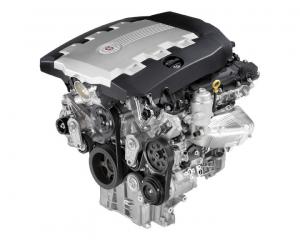Models affected:
2004-2007 Buick Rendezvous
2005-2007 Buick Allure (Canada Only), Lacrosse
2004-2007 Cadillac CTS, SRX
2005-2007 Cadillac STS
with 3.6L V6 Engine (VIN 7 – RPO LY7)
A very faint engine whine-type noise heard at speeds of 0-30 mph (0-48 km/h) at 1,000-2,500 rpm may be caused by the primary camshaft drive chain. This type of noise may be amplified by the vehicle’s body structure. The noise may be present at idle (hot or cold) and, in some vehicles, this noise may be louder. GM Powertrain Engineering states that this type of noise is characteristic and/or normal for this engine. No abnormal engine wear or internal damage will result due to this noise condition.
If an engine whine, whistle or ringing-type noise is heard from the front of the engine and increases in intensity as the engine rpm increases, stay tuned for an upcoming tech bulletin on this issue. An engine noise primarily around 1,600 rpm that can be described as a howl will typically be coming from the exhaust system. This is also considered a characteristic and/or normal type of engine noise.
Some or all of this information was provided by the Automotive
Parts Remanufacturers Association (APRA). For more information on
technical bulletins available through APRA call 703-968-2772 or visit www.AutoBulletins.com.













